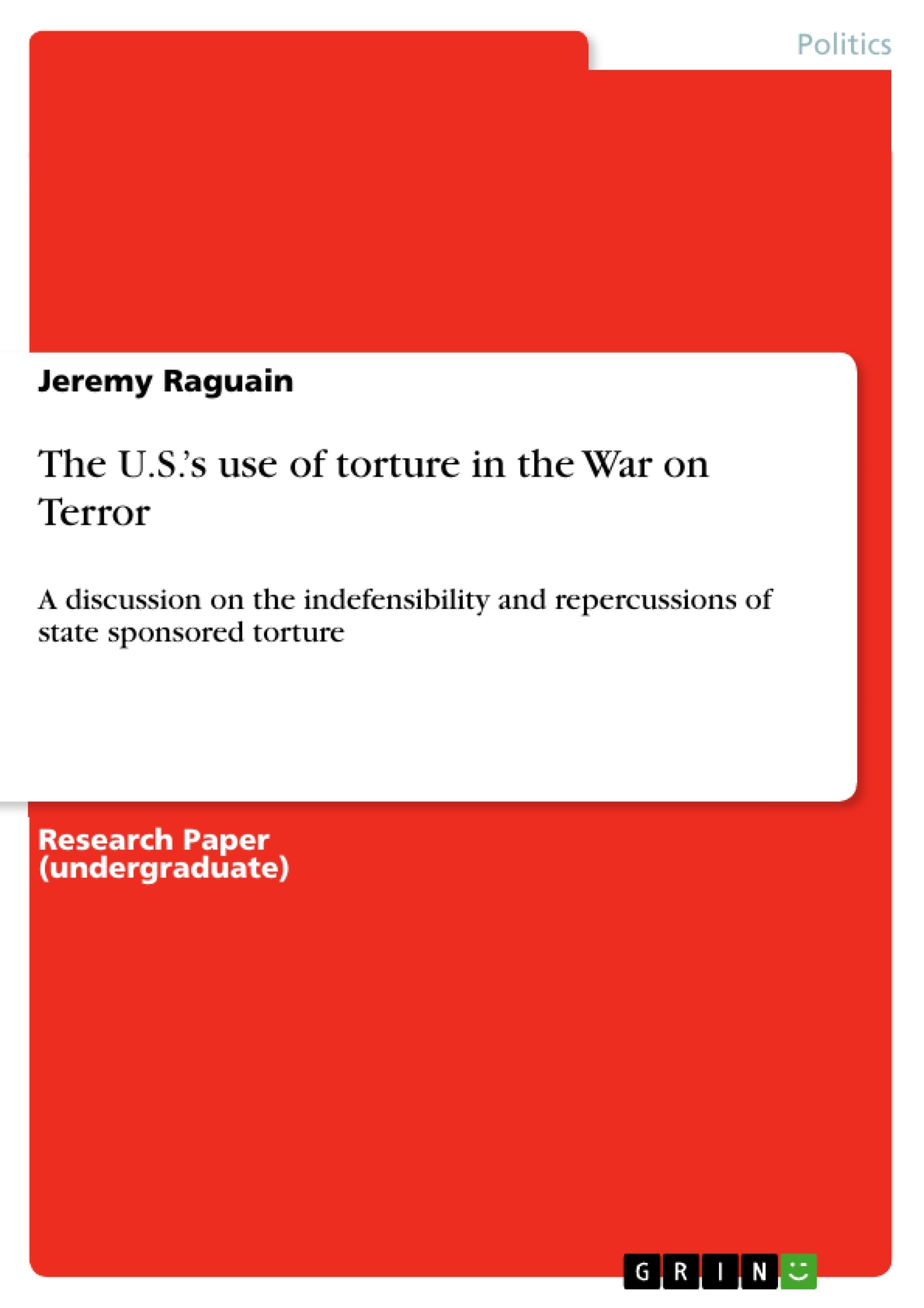The U.S.’s War on Terror has generated and continues to engender a great deal of international and domestic condemnation. This essay consequently analyses one of the most controversial and insidious repercussions of the ‘War on Terror’: the U.S.’s use of torture on terrorist suspects. Ultimately, this paper argues that torture as a counter-terrorism tactic was an ill-conceived act of desperation that violated human rights, damaged the U.S. government’s integrity and potentially increased terrorism. For this reason, the U.S.’s choice of torture is argued to be the basest of its mistakes in its War on Terror. Thus, this discussion focuses on the emergence of Enhanced Interrogation Techniques, cases of torture at Guantanamo Bay, the indefensibility of torture and the irreconcilable consequences of state sponsored torture. To substantiate its main arguments, this analysis draws on the International Committee of the Red Cross Report On The Treatment Of Fourteen High Value Detainees In CIA Custody and reports from the Select Senate Committee on Intelligence.
Inhaltsverzeichnis (Table of Contents)
- Introduction: What are the main criticisms of the use of torture by the U.S. in its War on Terror?
- Definition of torture
- Background
- Emergence of 'enhanced interrogation techniques'
- Evidence that enhanced interrogation techniques constituted torture
- Cases of torture at Guantánamo
- Key criticisms of torture
- Refutation of the ticking time bomb scenario
- Torture does not provide useful information
- Torture is counter-productive and may increase terrorism
- Conclusion
Zielsetzung und Themenschwerpunkte (Objectives and Key Themes)
This essay examines the controversial use of torture by the U.S. in its War on Terror, arguing that it was an ill-conceived act of desperation that ultimately violated human rights, damaged the U.S. government's integrity, and potentially increased terrorism.
- The illegality and definition of torture
- The development and use of Enhanced Interrogation Techniques (EIT) by the U.S.
- The evidence of torture at Guantánamo Bay (GITMO) and the implications of such practices
- The ineffectiveness and counter-productive nature of torture as a counterterrorism tactic
- The damage inflicted on the U.S. government's integrity by the use of torture
Zusammenfassung der Kapitel (Chapter Summaries)
The essay begins by defining torture and outlining the legal framework surrounding it. It then delves into the emergence of Enhanced Interrogation Techniques (EIT) employed by the U.S. in the War on Terror, exploring the evidence of their use and their potential illegality. The analysis then focuses on cases of torture at Guantánamo Bay, drawing on reports from the International Committee of the Red Cross (ICRC). The essay further explores key criticisms of torture, refuting the "ticking time bomb scenario" and arguing that torture does not provide reliable information and may even be counter-productive. The discussion emphasizes the damaging consequences of torture, both for the victims and for the U.S. government's reputation.
Schlüsselwörter (Keywords)
This essay focuses on key concepts like torture, enhanced interrogation techniques, Guantánamo Bay, human rights, counterterrorism, and the U.S. government's integrity. It draws on reports from the ICRC, the CIA Inspector General, and the Select Senate Committee on Intelligence to support its arguments, providing a comprehensive analysis of the controversial issue of U.S. torture in the War on Terror.
- Quote paper
- Jeremy Raguain (Author), 2016, The U.S.’s use of torture in the War on Terror, Munich, GRIN Verlag, https://www.grin.com/document/364681



